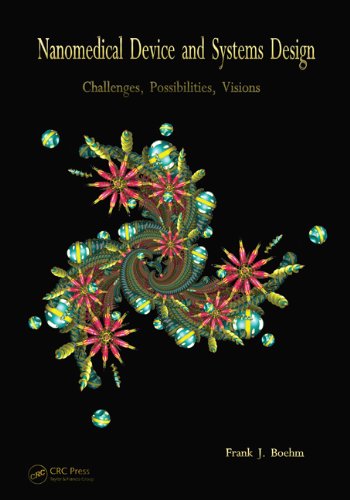

Most ebook files are in PDF format, so you can easily read them using various software such as Foxit Reader or directly on the Google Chrome browser.
Some ebook files are released by publishers in other formats such as .awz, .mobi, .epub, .fb2, etc. You may need to install specific software to read these formats on mobile/PC, such as Calibre.
Please read the tutorial at this link: https://ebookbell.com/faq
We offer FREE conversion to the popular formats you request; however, this may take some time. Therefore, right after payment, please email us, and we will try to provide the service as quickly as possible.
For some exceptional file formats or broken links (if any), please refrain from opening any disputes. Instead, email us first, and we will try to assist within a maximum of 6 hours.
EbookBell Team

0.0
0 reviewsNanomedical Device and Systems Design: Challenges, Possibilities, Visions serves as a preliminary guide toward the inspiration of specific investigative pathways that may lead to meaningful discourse and significant advances in nanomedicine/nanotechnology. This volume considers the potential of future innovations that will involve nanomedical devices and systems. It endeavors to explore remarkable possibilities spanning medical diagnostics, therapeutics, and other advancements that may be enabled within this discipline. In particular, this book investigates just how nanomedical diagnostic and therapeutic devices and systems might ultimately be designed and engineered to accurately diagnose and eradicate pathogens, toxins, and myriad disease states.
This text utilizes an author conceptualized exemplar nanodevice and system, the Vascular Cartographic Scanning Nanodevice (VCSN), to explore various prospective design considerations that might facilitate and enable selected functionalities of advanced autonomous nanomedical devices. It showcases a diverse group of expert contributing authors, who describe actual laboratory-based research aimed at the advancement of nanomedical capabilities. It also articulates more highly conceptual nanomedical possibilities and visions relating to the implementation of nanomedical technologies in remote regions and the developing world, as well as nanomedicine in space applications, human augmentation, and longevity.
This book benefits undergraduate and graduate students who are studying nanotechnology/nanomedicine, as well as medical administrative, scientific research, and manufacturing professionals in this industry.